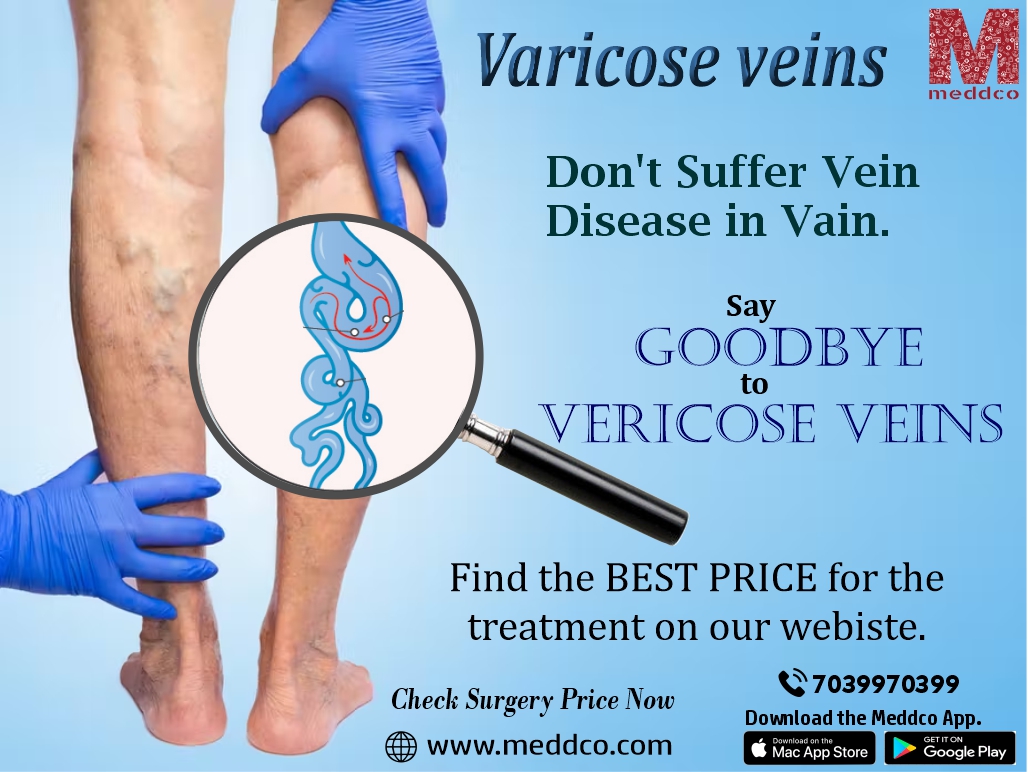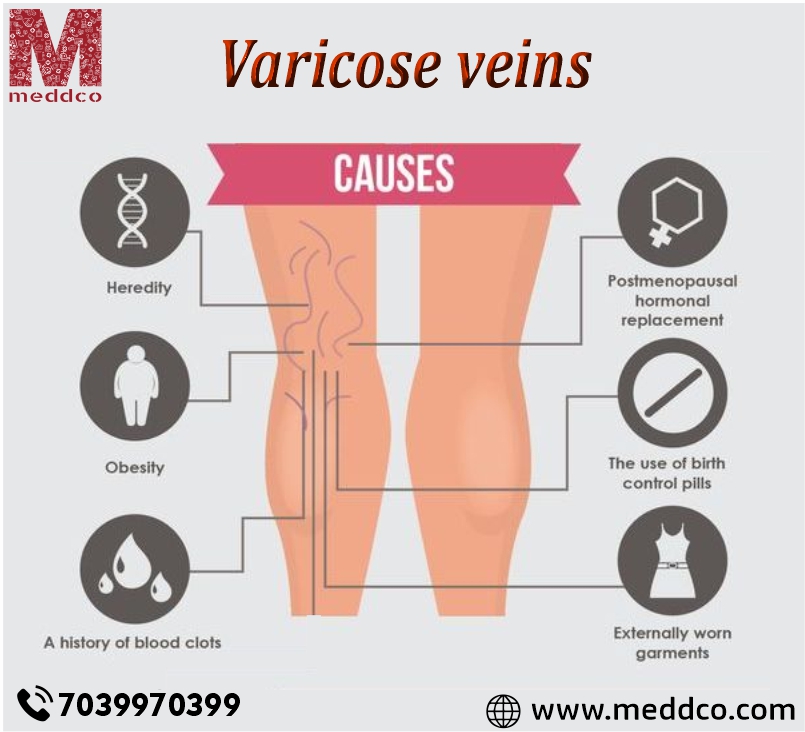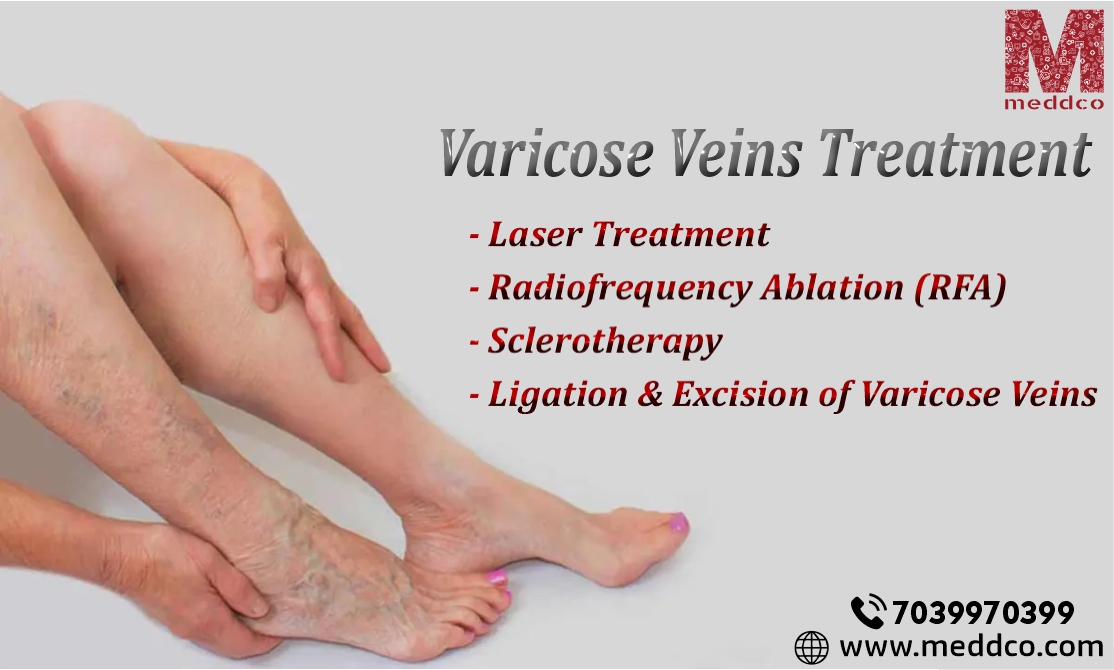

: Admin : 2022-06-21
What exactly are varicose veins?
Varicose veins are veins under the skin of the legs that have enlarged, bulged, and twisted. They are quite prevalent and do not cause medical problems in the majority of individuals. In the legs, there are two major vein systems:
All of these veins have one-way valves to keep blood flowing towards the heart. While these valves fail, blood flows backwards down the veins, causing an overflow of pressure when standing. This excess pressure leads to widening of the veins so that they do not close properly. Blood then flows back into the leg along these veins and causes varicose veins to develop. Increased pressure in these veins promotes the formation of spider veins and discolored regions that resemble bruises.

What are the symptoms of Varicose veins?
Varicose vein symptoms include bulging, cord-like, twisted veins that are dark blue, red, or purple to the naked eye. Spider veins may occur on the feet and legs, and they can even arise on the face. When these veins get inflamed, they may cause the surrounding skin to become very sensitive and painful, itching, and cause limb pains. Varicose veins may also cause the following symptoms:
What are the stages of varicose veins?
Trunk varicose veins: These are lengthy, bulging veins that are considered unsightly owing to their prominence. They are thicker than the other forms of varicose veins and are often caused by venal wall dilatation.
Reticular varicose veins are often red and form a network under the skin. They bulge less than trunk varicose veins and may signal circulation problems.
Telangiectasia varicose veins: These small clusters of thin, visible venal networks occur on the face or legs and are often referred to as spider veins. They are not as noticeable as other sorts in terms of stretching the skin and are completely safe.
What is the diagnostic test for varicose veins?
What is the treatment for Varicose vein?
Sclerotherapy: This method involves injecting a specific foamy chemical into the vein, which scars and shuts the vein. This process is done until the desired goal of varicose reduction is achieved. The varicose veins diminish and are therefore removed in a few weeks, sometimes needing many procedures. This procedure does not need anesthesia or a hospital stay.

Endovenous ablation treatment, also known as catheter-assisted operations, is used to treat bigger varicose veins by inserting a catheter with a heated tip into the vein. The catheter is dragged into the enlarged vein, causing it to collapse and fade, and either heat or radiofrequency is utilized.
Ambulatory phlebectomy: The doctor uses local anesthetic to execute a series of skin punctures to scar and shut smaller varicose veins. This is a minimally invasive technique that does not need a hospital stay.
Laser surgery is a relatively recent method that exposes the veins to powerful, targeted bursts of light to assist the varicose fade into the skin. This treatment is often used to treat small varicose or spider veins in the foot.
Endoscopic vein surgery: An endoscope is inserted into the diseased varicose vein to facilitate the operation, and this procedure is indicated only in situations involving leg ulcers or other suspected varicose vein problems, and if previous treatments have failed. This is also an outpatient process.
.jpg)
MEDDCO.COM is India's first digital pricing online platform, where price transparency is the key.
Our website allows user to search for surgical procedure diagnostic test and other healthcare services amongst various hospital and
healthcare provider in and around the location of user to compare the cost of services, compare the quality of services by the user
rating/reviews to take informed decision.
On our website you can find the best package price for Vericose Veins. You can also book an online appointment through our website.
For more information visit our website.
No Comments